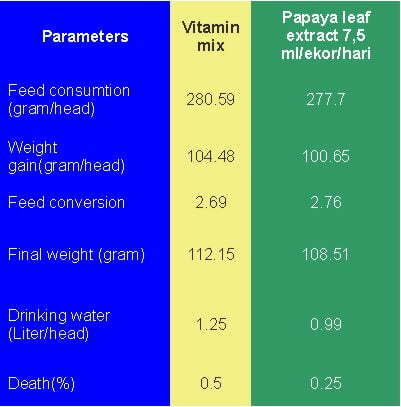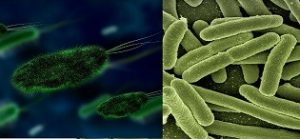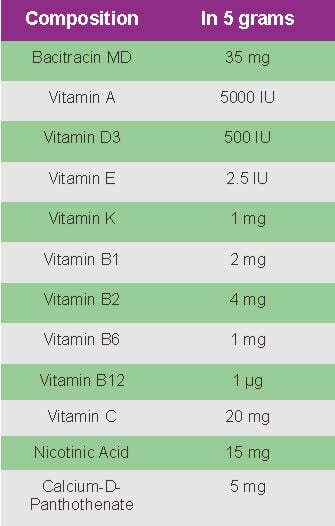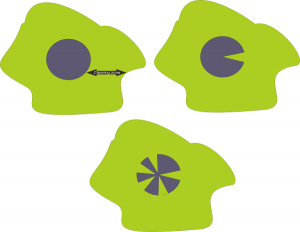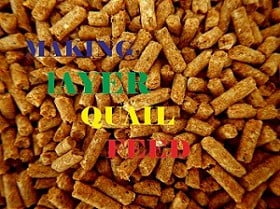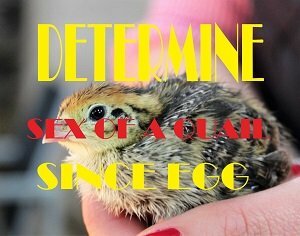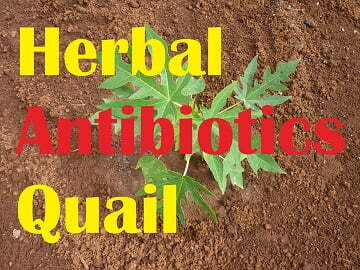Why give medicine and vitamins to quail?
In raising poultry, surely it can’t be separated from medicine, right? Almost all poultry, whether laying hens, broilers and ducks do that.
Likewise for quail. When giving DOQ (Day Old Quail) drinks, we always provide them with vitamins and antibiotics.
Why do we do that? Because this is what must be done.
Its purpose is for preventive measures. And, almost all quail breeders do.
As if it was a standard SOP, right?
SOP or not, giving vitamins and antibiotics to quail is necessary. Vitamins can help quail growth to become more normal.
If they have grown normally, the hope is that there will be no clumps. All quails, if possible, have the same weight or uniform.
The hope is even higher, giving antibiotics from an early age so that the quail will not get sick, stress, and die.
Don’t let that happen. Hence, giving these vitamins and antibiotics should be given since the quail starter.
It is now easy to find vitamin and antibiotic products for starter phase poultry.
Many brands on the market. Maybe the brand will be different for each country.
Those that are synthetic or artificial products.
If you want the natural way, you can use papaya leaves. For this one, I will discuss in this article.
At the end of this article, we will find out later that papaya leaves can replace the drugs and vitamins mentioned above.
Bacteria that attack quail and the diseases they cause
Of the several bacteria that usually attack quails are E. Coli and Salmonella Typhimurium.
Both of these bacteria can cause indigestion and diarrhea in quails. Not only in quail, but in humans it can also cause the same disease, namely diarrhea.
For E. Coli bacteria, it exists in the animal body. It is found in the intestinal organs. More precisely, the large intestine in humans.
However, if E. Coli is present or found outside the intestine, or in excessive amounts, it can cause indigestion.
Similar to E. Coli bacteria, S. Typhimurium bacteria also have the same effect.
There are many S. Typhimurium names. Synonyms include Salmonella choleraesuis serotype Typhimurium, Salmonella typhi-murium, Bacillus Typhimurium and Salmonella typhi-murium. [1]
What will happen if quail has diarrhea?
What is clear, the digestive function will be disturbed.
The digestive tract functions to digest food so that it can take advantage of the nutrients in food. If this process is disturbed, then the absorption of nutrients will also be disturbed, right?
If it is not resolved immediately, the absorption of nutrients by the quail will be hampered.
Things like this can result in decreased endurance. If the body’s resistance is weakened, there will be lots of bacteria and viruses that are easy to attack.
As a result, DOQ can be stressed and die.
If DOQ has been infected by these two bacteria, it can easily be transmitted.
Transmission can be through feces, food, and drinks that have been contaminated by these bacteria.
How can food and drink be contaminated by these bacteria?
DOQ that has been infected, has these bacteria in their feces. Even if the infection is severe, these two bacteria can be present in the saliva and digestive tract.
If the infected DOQ eats and drinks, the bacteria can be left in places to eat and drink.
Especially if the place to drink is 1 container for one cage. Most likely the transmission could be faster.
How to increase the quail’s immune system
Maintaining the quail’s immune system so that it is always strong is the best step to withstand disease attacks.
This can be done by always providing vitamins and antibiotics to the quail.
The vitamin content in products such as Vitachik is very complete. We can see on the packaging. You have to look at the product around yourself.
If you don’t have the product, I’ll give you the content or composition of the product.
In the table above, it is the composition of vitachik in every 5 grams. If it is one pack, it means that the value is just multiplied by the two.
One packet is usually 10 grams of net content.
Bacitracin Md is the antibiotic. [2] Others are vitamins and nutrients that are required by quail.
If we give the above products every day, then antibiotics are also automatically given every day, right?
Either in a state of illness or not, antibiotics are taken by the quail.
If antibiotics are not taken in a sick condition, this can lead to the emergence of antibiotic resistance.
Tuh…
Papaya leaves as an alternative. Why, what does it contain?
Papaya leaves have long been used as an ingredient in traditional medicine.
There must be active ingredients in papaya leaves that are useful in the world of medicine. If there was nothing, it would have been abandoned for a long time.
According to a study, it is stated that this papaya leaf extract can replace the role of vitamins and synthetic antibiotics.
This is because papaya leaves contain compounds such as saponins, alkaloids, tannins, phenols, flavonoids, triterpenoid, steroids, and glycosides.
Saponins, it can reduce ammonia levels in feces. Thus, it can make livestock less susceptible to disease. [3]
The alkaloid function is no longer in doubt. It has been widely used in the medical world as a treatment. In detail, achaloid can be studied in reference no [4].
Flavonoids are the same. It has medicinal properties. It is widely used as an anti-bacterial, antiviral, anti-cancer, anti-inflammatory, antioxidant, and several diseases of the heart blood vessels. [5]
Effects of papaya leaves on bacteria
This time we will focus a little more on the anti-bacterial properties of these papaya leaves.
Because our goal is to get information that this leaf can replace synthetic antibiotics.
For that, we will encounter some academic terms which may need a little explanation.
But, I don’t want to confuse you. Therefore, as much as possible I will convey it very simply.
Any compound that functions as an antimicrobial, it has an inhibitory power. This inhibitory power means how strong the compound is in inhibiting the development of bacteria.
In papaya leaves, the compounds I mean are flavonoids, tocophenols, and karpain alkaloids.
The antibacterial compounds in papaya leaves have moderate to strong inhibitory power. [6] Depending on the amount of concentration of papaya leaves.
This is good news. Because there are antimicrobial compounds that have weak inhibitory power against bacteria.
The antimicrobial compounds from papaya will form a clearing zone when they interact with bacteria.
These compounds seem to gang up on bacteria and surround them. Thus bacteria cannot thrive.
Then the antimicrobial compounds from papaya leaves will react with the bacterial cell walls. This reaction will cause the cell wall to be damaged and the cell nucleus of the bacteria to open.
After that, the compounds can enter the bacterial cell nucleus and damage the bacterial DNA structure. If the cell nucleus is damaged, the bacteria die.
This is a simple explanation. If the academic explanation is certainly not like this, it will certainly be even more complicated.
How to make vitamins and antibiotics from papaya leaves for quail
The compounds contained in papaya leaves will be more effective in extract form.
This is because extracts are usually in liquid form. So that it is more easily absorbed by the quail.
Also, giving it will also be easier, just give it through drinking water.
Even so, making papaya leaf extract is also not difficult.
Here’s how.
Old papaya leaves, but not yet yellow, then dried. Then add water.
The ratio between papaya leaves and water is 1: 5. If the papaya leaves are 1 kg, the water is 5 liters. If the papaya leaves are 0.5 kg, the water is 2.5 liters.
Then boil for 30 minutes. Counted from the time the water boils.
After that, cooled and filtered. The filter results are ready to use.
The method of giving is mixed with drinking water. According to research, the best dosage is 7.5 mL of papaya leaf extract per head per day.
Papaya leaf extract research for quail antibiotics
There is a study conducted to determine the properties of this papaya leaf extract.
This papaya leaf extract was tested on DOQ of quail from 2 days to 5 weeks of age.
The feed used is a commercial feed that contains the standard nutrition of starter quail.
All quail are given the same diet except for their slightly differentiated drinking water.
Some of the starter quails were given drink + vitamin mix, while the other group of quails was given papaya leaf extract.
The vitamin mix used is Vitachik. For papaya leaf extract, some are given 2.5 mL, 5 mL, and 7.5 mL per head per day.
But for the papaya leaf extract, I will focus more on the 7.5 mL. This is because, in my opinion, the dosage has the best results.
Research result
Quail that was drunk with vitachick and papaya leaf extract was not much different.
There are still differences but the amount of difference is not that big.
In brief, the results can be seen in the image below.
From the results above, it can be seen that the mortality rate in quails that were given drinking water from papaya leaf extract was less.
Even without the added vitamin mix, the growth performance was almost the same. Although the value is slightly below the quail given vitamin mix.
These results were obtained after five weeks. Five weeks is a long time, you know. Because soon the quail will start laying eggs.
With no vitamin mix at all, the average final weight of quail is 108.5 grams. It’s still normal.
With vitamin mix for 5 weeks, quail mortality is only 5%. This is normal. But with papaya leaf extract, the mortality rate is even less.
Why did it happen?
Quail droppings were also sampled. Then tested whether the quail contamination still has bacteria or not.
Synthetic vitamins and antibiotics, quail droppings do not have Salmonella Typhimurium bacteria, but there are still E. Coli bacteria.
However, by giving papaya leaf extract as much as 7.5 ml/head/day, the two bacteria were negative. This means that there are no bacteria in quail droppings. [6]
Cool, right?
I hope that there will be many researchers who can produce useful research for this kind of society. As additional information, this research was conducted by IPB Bogor.
Even the researchers dare to conclude that this papaya leaf extract dosage can replace the use of vitachick.
Vitachick vs papaya leaf extract cost calculations
Now, I will try to calculate in terms of costs. Which is more economical to use vitamin mix or papaya leaf extract.
Of course, this is based on the product and the price that applies in my place. Later, just adjust it to the existing conditions.
For that, we need to know what the minimum drinking requirements are needed by the quail itself.
Quail drinking water needs
According to some literature, quail until the age of 1 – 5 weeks, the total water drunk is 1 – 1.3 liters.
However, the amount of quail drinking needs can be influenced by environmental temperature and food factors. If the weather is hot, drink more.
There are even other sources that say that up to 5 weeks of age quails can drink as much as 2.29 liters per head.
Ok, I consider drinking quail for 5 weeks to be 2.5 liters. Of course, it is impossible right, if you drink it ration? It must be exaggerated.
However, in practice, this drinking should be given adlibitum. This means that drinking water for quail must be available at all times.
I need this to make calculations between vitamin mix and papaya leaf extract.
The number of vitamins and papaya leaf extract for 1000 quail
I assume the number of quails kept is 1000. If each bird needs 2.5 liters for 5 weeks, then a thousand birds need 2500 liters of drinking water.
Now we look at the dosage for vitamin mix. On the packaging, for dose, one pack of vitamin mix (5 grams) is for 7 liters of water.
So, if you need 2500 liters of water, the amount of vitamin mix needed is 2500/7 = 357 packs.
If the price per pack is Rp. 2,500, the total is Rp. 892,500. Not a small amount, right?
Now we check for the papaya leaf extract.
The dose of papaya leaves to be used is 7.5 mL/head/day.
If there are 1000 quail, then per day, we need 7500 mL or 7.5 liters of papaya leaf extract. Just multiply by five weeks means we need an extract of 7.5 liters x 35 days = 262.5 liters.
To get this much papaya leaf extract, we need 1.5 kg of dry papaya leaves every day. Just think about it, can’t find this much-dried papaya leaves every day.
If you can, please continue. If not, then it’s finished.
It is quite difficult for me to calculate the cost of producing papaya leaf extract. This is because I haven’t got enough accurate information about this papaya.
What I compare is, if we use vitamin mix, we have to spend almost 900 thousand. If you use papaya leaves, you have to collect as much as 1.5 kg of dried papaya leaves.
Conclusion
I feel sure that synthetic antibiotics if given every day can cause antibiotic resistance in quail. Not only quail, maybe in laying hens, broilers, ducks, ducks, and other poultry.
Especially if it is given every day. Where not every day the cattle are sick. Mostly healthy, right.
Many other alternatives can be used as a source of vitamins and antibiotics. There are still breeders who are already using herbs in their livestock business.
For example, Mas Betha. He is very focused on developing his herbal products. This is not a promotion you know.
He does sell products, but if we intend to make it yourself, he will be happy to tell you how.
According to research [6], papaya leaf extract can indeed be used to replace vitamin mix.
However, to use it, it seems quite a hassle. Especially if it is difficult to find papaya plants around us.
Finally, from me, the issue of antibiotic resistance must be thought through in the long term.
Until here first for the discussion of this article. InsyaAllah we will meet again next week.
 JOYNIM FARM Goat Farming, Cattle Farm, Laying Hens, Quail Farm, Gardening
JOYNIM FARM Goat Farming, Cattle Farm, Laying Hens, Quail Farm, Gardening
